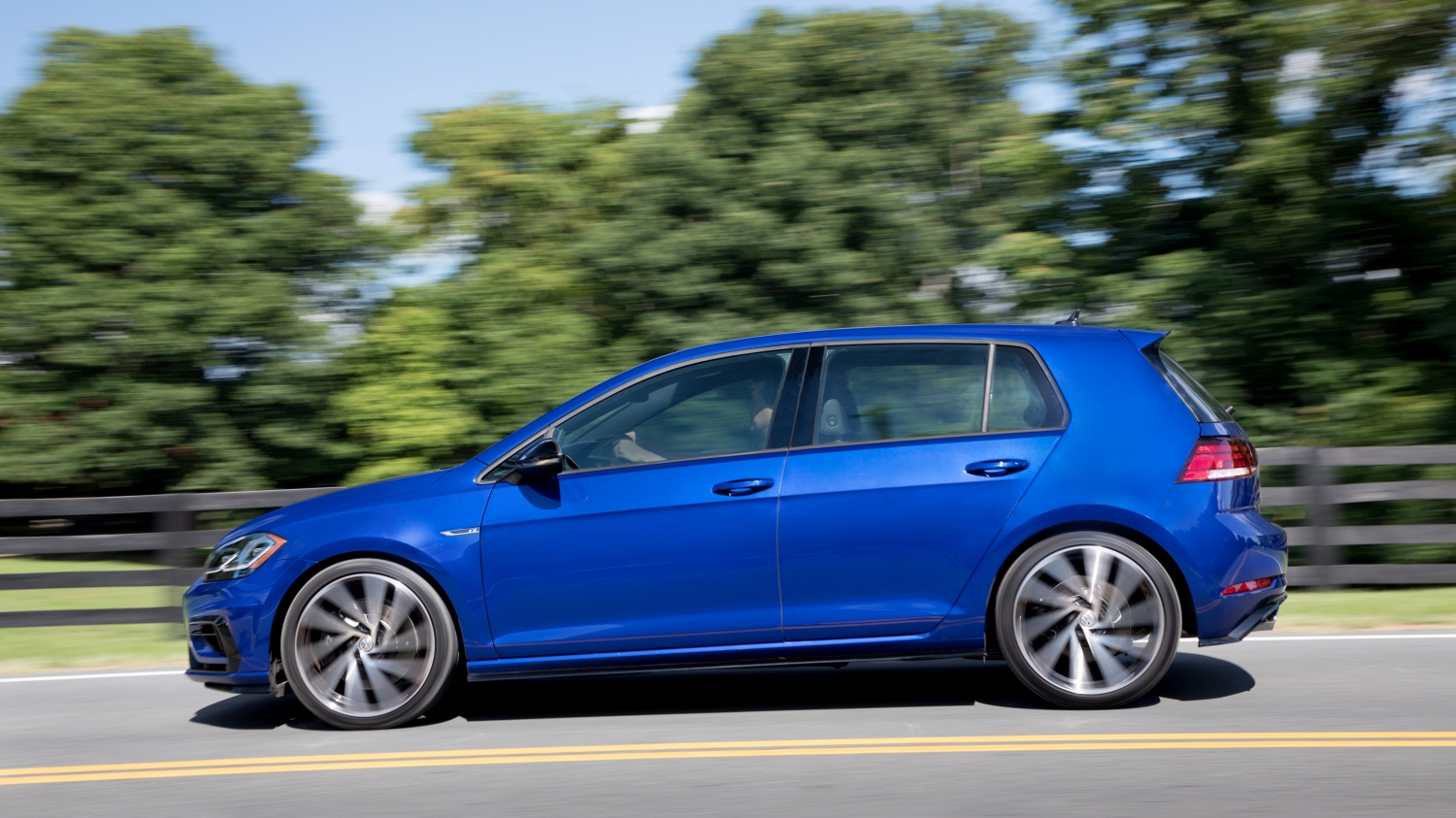This button on the 2018 VW Golf takes you from thrill ride to cushion of air
A totally different experience with a single touch

I noticed the button right away in the 2018 VW Golf R. A sporty hot hatch made for taking corners at top speeds – on the track or off – the Golf R is one of the most exciting small cars I’ve driven in a while, mostly because it’s light, has a 292-horsepower turbocharged engine, and is nimble and fun.
At $31,785 (about £31,300, AU$54,800), it’s also a bit more affordable than other hot hatch models, like the Mercedes-Benz AMG GLA 45 ($53,350, about £42,000, AU$73,400).
As you drive, you can press the Mode button to switch between Normal, Comfort, Sport, and Race. As Megan Closset, product manager for the Golf family of hatchbacks, explained to TechRadar, the modes are all software related.

“Comfort uses [suspension] dampers in the softest setting,” she says. “Sport stiffens them up and Race stiffens them further. Normal cycles between soft and stiff depending on the circumstance, so while driving on the highway, it goes to a softer setting, but as soon as the system detects increased G-Force, like when you are cornering, then it stiffens the dampers. The system can actually vary rebound and compression damping during cornering.”
Seamless switching
Known technically as the Driving Mode Selection, the button also has other effects on how the Golf R actually drives, impacting how quickly the headlights move automatically around corners for night time driving, steering response, and transmission (for example, Sport mode locks out the seventh gear in the automatic transmission model and tightens the shifting for other gears).
Testing out the Race mode, the screen changed to show a lap timer, a G-Force indicator (how much force you experience on corners or accelerating), and turbo PSI (pounds per square inch). The screens are easy to read and use, even during a test on curvy roads.
Another interesting effect – when you switch between modes, the car sounds different. I noticed this when I used Race mode for most of a day. The exhaust was louder. VW calls this the Soundaktor setting, and it feels a bit more like a race car on a track.
Get daily insight, inspiration and deals in your inbox
Sign up for breaking news, reviews, opinion, top tech deals, and more.

Fortunately, all of these settings are seamless – I was able to switch between them during a long day or driving, deciding to use the Comfort setting when I wasn’t interested in spirited driving, and then use race on a curvy country road in the middle of nowhere.
A flexible future
For future driving, the Mode button could have a few interesting implications. One is that we will have more and more control over how cars drive, and when we want to feel more comfortable in the driver’s seat versus feeling a bit more of the road with a stiff suspension. Other sporty cars, such as the Dodge Challenger, offer similar features for adjusting not only the suspension but even whether certain cylinders are used and tweaking the horsepower.

However, as cars start driving themselves, we might be able to tweak comfort settings even more, almost like a performance chair you use in the office, tweaking the feel of the road, the cornering and suspension, and the interior lighting to suit our mood and preferences.
Interesting, too, that this is all done with software algorithms, adjusting the VW Golf R with the touch of a button, no matter your speed or the road surface. While I’m more inclined to stick with Race mode in almost every trip, it’s good to know we have plenty of options.
On The Road is TechRadar's regular look at the futuristic tech in today's hottest cars. John Brandon, a journalist who's been writing about cars for 12 years, puts a new car and its cutting-edge tech through the paces every week. One goal: To find out which new technologies will lead us to fully driverless cars.
John Brandon has covered gadgets and cars for the past 12 years having published over 12,000 articles and tested nearly 8,000 products. He's nothing if not prolific. Before starting his writing career, he led an Information Design practice at a large consumer electronics retailer in the US. His hobbies include deep sea exploration, complaining about the weather, and engineering a vast multiverse conspiracy.
